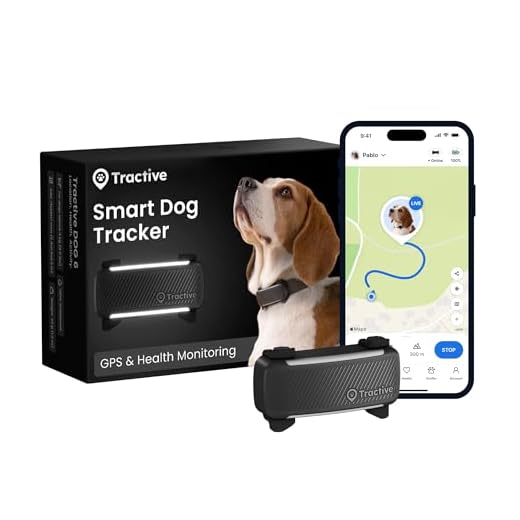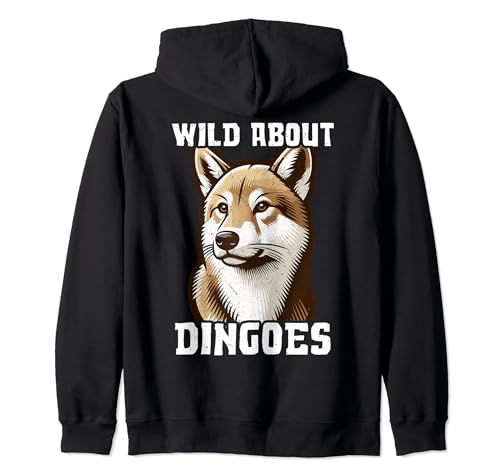




It’s not uncommon for our furry companions to nibble on a patch of greenery during their walks. While many pet owners wonder about the implications of this behaviour, the reality is that it doesn’t always lead to adverse effects. In fact, some canines simply enjoy the texture or taste of certain plants.
Observations indicate that many four-legged friends munch on flora out of instinct rather than necessity. This action can serve various purposes, such as aiding digestion or alleviating boredom. However, it’s crucial to monitor what types of plants are being consumed, as some varieties can pose risks to their health.
If you notice your pet indulging in this habit, ensure they avoid toxic species. Common plants like lilies or certain ferns can be harmful. Keeping a close eye on your companion’s behaviour and health is essential. If any signs of distress appear, such as vomiting or lethargy, consulting a veterinary professional is advisable.
In my experience, my dog occasionally nibbles on the grass in our garden. I’ve come to realise that this isn’t necessarily a cause for alarm, but rather a natural behaviour. As long as the surroundings are safe and non-toxic, it can be just a quirky aspect of their personality.
Potential Risks of Canine Herbivory
While some four-legged companions may munch on vegetation without any immediate consequences, it’s crucial to monitor their wellbeing. If your pet exhibits vomiting or signs of discomfort after ingesting plant matter, consider consulting a veterinarian. It’s wise to rule out any underlying gastrointestinal issues or other health concerns. Some grasses may be treated with pesticides or chemicals that could pose additional risks to their health.
Understanding Motivations Behind This Behaviour
Observing why a canine might indulge in this behaviour can provide insights into their dietary needs. Some may seek this habit out of boredom or as a response to an upset stomach. Others could be curious explorers, treating it as a new experience. Keeping your companion engaged with toys and regular exercise may reduce the likelihood of them turning to flora for stimulation.
Safe Alternatives and Solutions
If you’re concerned about your pet’s fascination with plants, consider providing them with safe, dog-friendly options. Herbs like parsley or basil can be healthy treats. Always ensure that any plant they have access to is non-toxic. Regular check-ups with a vet can help track their dietary habits and overall health.
Understanding Why Canines Consume Vegetation
Observing a pet munch on foliage can raise eyebrows, but there are several reasons behind this behaviour:
- Natural Instinct: Ancestral traits play a role. Wild canines often consumed plant matter, possibly to aid digestion or for nutritional benefits.
- Dietary Supplement: Some pets may seek out greens to obtain missing nutrients or fibre. This could indicate a dietary imbalance that needs addressing.
- Gastric Relief: Many companions may nibble on flora when experiencing stomach discomfort. The rough texture can induce vomiting, potentially offering relief.
- Boredom or Anxiety: A lack of stimulation can lead to unusual habits. Engaging in this activity might simply be a way for them to cope with stress or boredom.
- Curiosity: Pets often explore their environment through taste. Sampling different textures and flavours can be a part of their natural curiosity.
Recognizing these motivations can help in understanding your furry friend better. Paying attention to their behaviour and habits will guide decisions on their diet and overall well-being.
Common Symptoms of Grass Consumption in Dogs
Watch for the following signs if your pet has indulged in a bit of greenery:
- Vomiting: This is the most common reaction, often occurring shortly after the incident. It can be a way for the canine to rid itself of any irritants in the stomach.
- Diarrhoea: Loose stools may follow if the canine’s digestive system reacts negatively to the fibrous material.
- Excessive Salivation: Increased drooling can indicate discomfort or nausea, especially if the animal is feeling unwell.
- Lethargy: A noticeable drop in energy levels might occur. Your furry friend may seem less playful or more inclined to rest.
- Abdominal Discomfort: Look for signs of bloating or discomfort, such as whining or reluctance to be touched in the belly area.
- Loss of Appetite: If your companion is avoiding food after munching on some plants, it could be a sign of an upset stomach.
If several of these symptoms appear, it’s wise to consult a veterinarian for guidance. Keeping an eye on your pet’s behaviour post-ingestion can help ensure their well-being.
When to Worry About Your Dog Eating Grass
If your furry friend consumes vegetation and exhibits unusual behaviour or symptoms, it’s time to take action. Monitor for signs of distress, especially if they are persistent or severe.
Key Indicators of Concern
Pay attention to the following warning signs that may indicate a problem:
| Symptom | What It May Indicate |
|---|---|
| Vomiting | Possible gastrointestinal upset or toxicity. |
| Diarrhoea | Indicates digestive issues or dietary intolerance. |
| Excessive drooling | Could signal nausea or oral irritation. |
| Lethargy | Sign of illness or discomfort requiring veterinary attention. |
| Loss of appetite | Potential indication of underlying health issues. |
When to Seek Veterinary Care
If your pet shows any combination of the symptoms listed above, or if they continue to exhibit concerning behaviour after consuming plants, consult a veterinarian. Timely intervention can prevent complications and ensure your companion’s well-being.
Safe Types of Grass for Dogs
Choosing appropriate varieties of turf for your furry friend is key. Some grasses are harmless and can be chewed without causing discomfort. Bermudagrass and Fescue are generally safe options. They are resilient and can withstand the playful antics of canines.
Ryegrass is another suitable choice, known for its softness and palatability. It’s often used in dog parks and backyards where pets roam freely. Avoid any types treated with chemicals or pesticides, as these can be harmful.
In my experience, having a designated area with safe turf has made a difference in my dog’s behaviour. I noticed he prefers nibbling on the softer varieties instead of the tougher ones. This has led to fewer digestive issues and a happier pup.
Always ensure that the grass in your yard is free from harmful weeds or plants. Regularly check for any foreign substances that could pose a risk. Keeping an eye on what they consume can help you avoid potential problems.
If you’re also considering nutrition, check out the best dog food for a corgi puppy to complement their diet while ensuring they enjoy their time outdoors safely.
Potential Health Risks Associated with Grass Consumption
Be cautious if your furry friend is inclined to munch on blades of greenery, as certain risks are associated with this habit. One immediate concern is the ingestion of pesticides and herbicides that may be present on lawns. These chemicals can lead to gastrointestinal distress, vomiting, or more severe health issues over time. Always ensure your outdoor space is free from harmful substances before allowing your pet to roam.
Another risk involves the potential for choking or obstruction. Longer pieces of vegetation can become lodged in the throat or digestive tract, necessitating veterinary intervention. Keep an eye on your companion, especially if they tend to gobble up large quantities quickly.
Parasites and Infections
In addition to chemical hazards, grassy areas can harbour parasites such as ticks, fleas, and worms. If your canine companion consumes contaminated foliage, they may be at risk of contracting these unwanted guests, leading to a host of health complications. Regular vet check-ups and preventive treatments are advisable to keep these threats at bay.
Underlying Health Issues
A tendency to consume vegetation can sometimes indicate underlying health concerns. Conditions such as gastrointestinal disorders or nutritional deficiencies may prompt this behaviour. If your pet exhibits unusual cravings or changes in appetite, consulting a veterinarian is wise to rule out any serious problems.
How to Discourage Grass Consumption in Canines
To effectively reduce the urge to munch on greenery, redirect attention to engaging activities. Daily walks and playtime can significantly lower the chances of your furry friend snacking on outdoor vegetation. Interactive toys, such as puzzle feeders, stimulate their minds and keep them occupied. This strategy not only deters unwanted habits but also strengthens the bond between you and your pet.
Modify Their Environment
Consider altering your garden space. If certain areas are consistently targeted, implementing barriers or using non-toxic deterrents can be beneficial. Products like bitter sprays, designed to discourage chewing, can be applied to specific plants. Additionally, providing a designated area with safe alternatives, such as dog-friendly plants, can satisfy their curiosity without causing harm.
Monitor Their Diet
A balanced and nutritious diet can reduce the likelihood of your pet seeking out greenery. Ensure their meals contain adequate fibre and essential nutrients. Consulting with a veterinarian for tailored dietary recommendations can address any deficiencies that might push them towards outdoor munching. This proactive approach may eliminate the need for them to forage.
If you’re considering tools to maintain your yard, a pressure washer for cyclocross could help keep the environment tidy and less appealing for your canine companion.
Veterinary Advice on Dogs and Grass Consumption
Consult a veterinarian if you observe unusual behaviour following your pet’s interaction with vegetation. Professional insight is invaluable, particularly if vomiting or severe lethargy occurs. Some breeds may be more prone to digestive issues, so understanding your dog’s specific health needs is crucial.
Understanding Veterinary Perspectives
Many veterinarians suggest monitoring your canine companion’s dietary habits to ensure a balanced intake of nutrients. Occasionally, dogs may seek out flora to supplement their diet, especially if lacking fibre. Providing adequate nutrition can reduce the urge to nibble on plants.
In cases where your furry friend frequently targets grass, it could indicate an underlying gastrointestinal discomfort. Regular check-ups can help identify any potential health issues early. Additionally, maintaining a stress-free environment is beneficial, as anxiety may drive some pets to consume non-food items.
Proactive Health Measures
Regular exercise and mental stimulation contribute to overall well-being. Engaging your dog with interactive toys or training sessions may distract from unwanted behaviours. If necessary, consult with a pet behaviourist for tailored strategies to redirect your pet’s focus.
Ensure your garden is free from harmful chemicals and pesticides, as these can pose serious health risks. Opt for organic gardening practices to create a safe environment for your pet. If your dog continues to seek out plants, consider introducing safe alternatives, such as specific herbs or grass designed for canine consumption.
Always prioritise your dog’s health and happiness. Understanding their needs and behaviour enhances your bond and ensures a happier life together.








